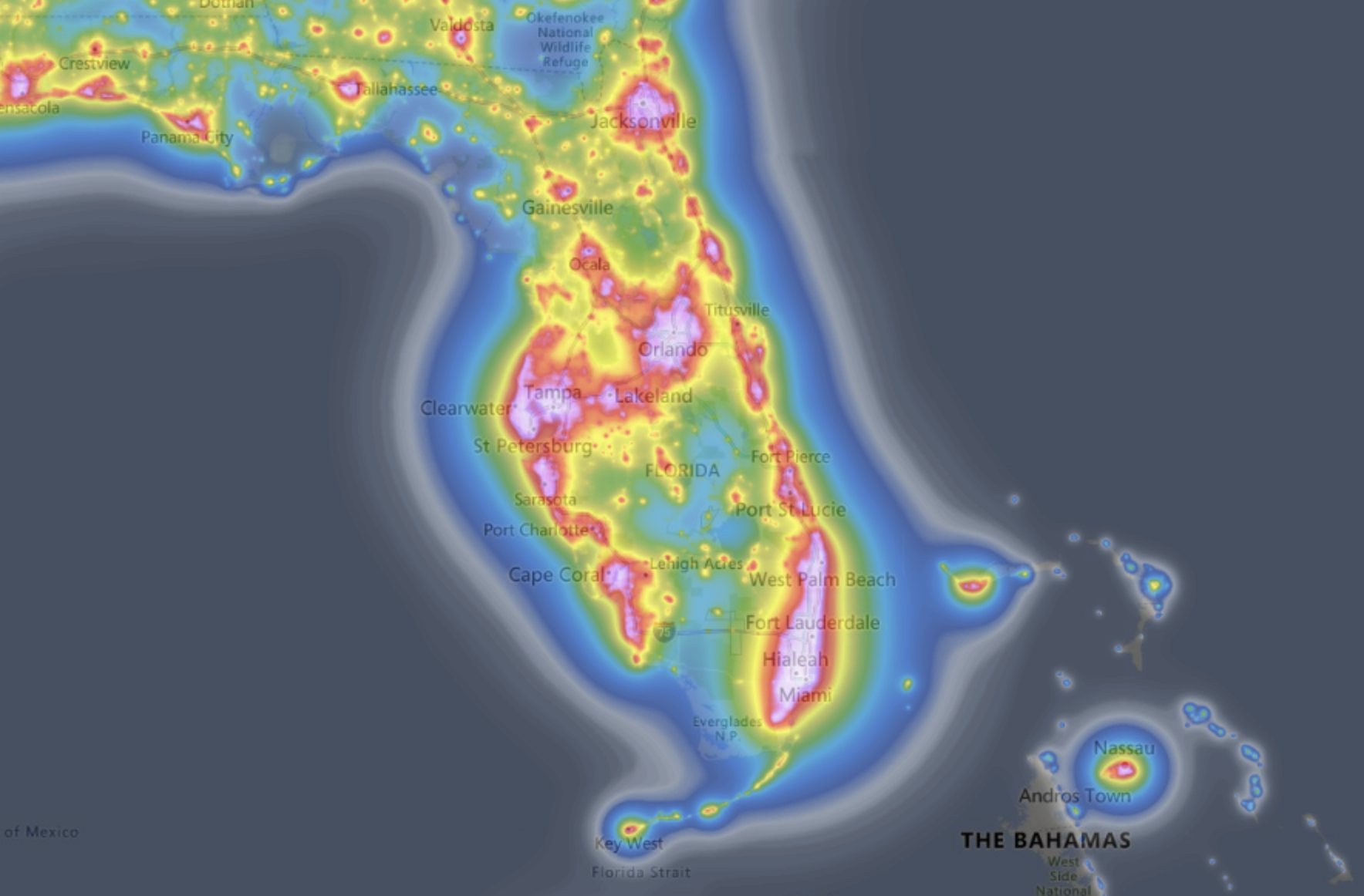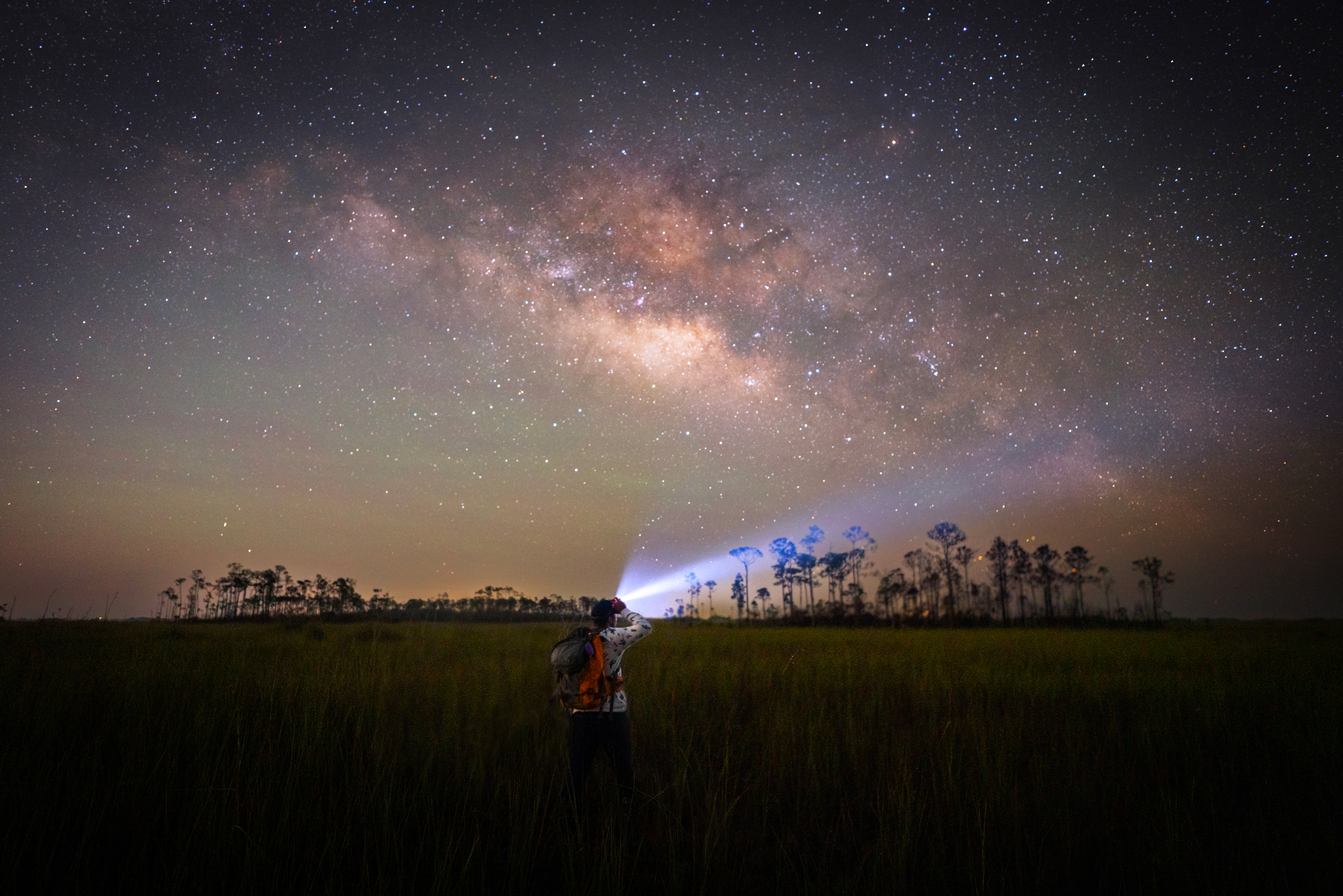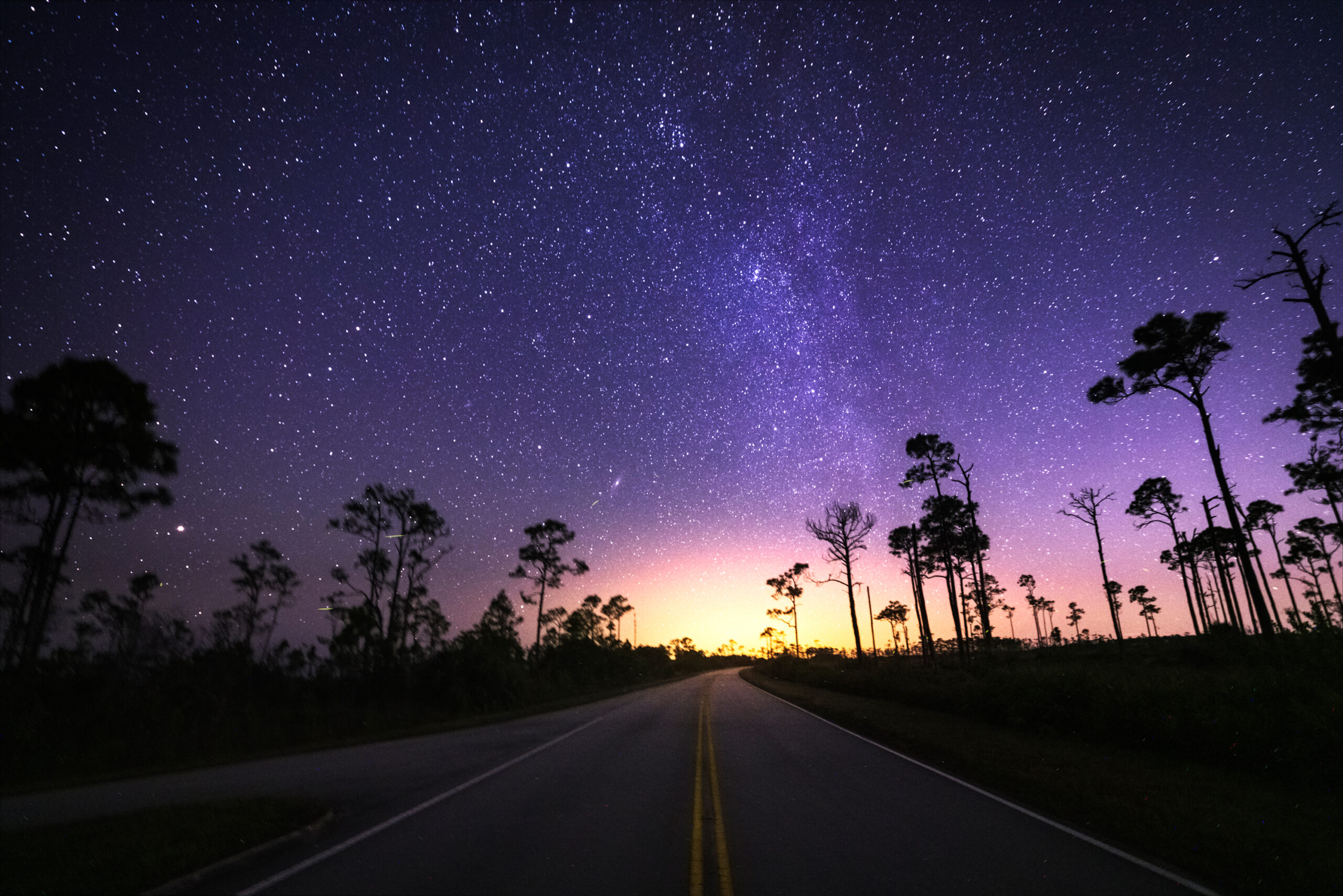Exploring the Night Sky in Wild Florida
Words and Photographs by Anthony Sleiman
Imagine driving hours away from light pollution and finding yourself outside in the middle of nowhere. You look at the night sky, and you can see millions of stars shining. You’ve never felt more inspired and connected to the universe. After gazing at the night sky, you decide to take your camera to capture the moment…and that’s when you realize you don’t know how to do night photography.
Fear not! I’m here to guide you through capturing those breathtaking images that will leave everybody in awe and allow you to preserve those memories under the night sky.

If you are wondering who I am, my name is Anthony Sleiman. For the last five years, I’ve been photographing some of the darkest skies in Florida in the Everglades and beyond to increase awareness about light pollution and protect our night skies. Additionally, I am an expert in fighting off the massive and almost immortal mosquitoes of the Everglades.
More from Anthony: The 5 Best Places to Stargaze in Florida

Jurij Stare, www.lightpollutionmap.info. World Atlas 2015 – Falchi, Fabio; Cinzano, Pierantonio; Duriscoe, Dan; Kyba, Christopher C. M.; Elvidge, Christopher D.; Baugh, Kimberly; Portnov, Boris; Rybnikova, Nataliya A.; Furgoni, Riccardo (2016): Supplement to: The New World Atlas of Artificial Night Sky Brightness. GFZ Data Services. http://doi.org/10.5880/GFZ.1.4.2016.001 Falchi F, Cinzano P, Duriscoe D, Kyba CC, Elvidge CD, Baugh K, Portnov BA, Rybnikova NA, Furgoni R. The new world atlas of artificial night sky brightness. Science Advances. 2016 Jun 1;2(6):e1600377.
Why Dark Skies Matter
Before we start our journey, let’s discuss why dark skies matter. It’s not just about stargazing; dark skies play a vital role in the survival of various species. Birds, bats, and insects rely on the night sky for navigation, and artificial light disrupts their natural behaviors and habitats. Excessive artificial light at night can also harm human health by disrupting sleep patterns and circadian rhythms. Preserving dark skies is essential for safeguarding biodiversity and promoting human well-being.
This month, from April 2 -8, 2024, we are celebrating Dark Sky Week, an initiative that aims to raise awareness about light pollution and promote the preservation of our natural nightscapes, encouraging communities to take action to protect our night skies for future generations.

Introduction to Night Photography
Night photography might seem a little intimidating, but trust me, it’s easier than it seems. The first time I went out in the Everglades at night to photograph the stars, I barely knew how to turn on the camera, and I came home with some not-so-good photos and a lot of mosquito bites.
Now, a few years later, I’ve been able to explore almost every corner of the Everglades at night, photographing the Milky Way galaxy, meteor showers, and comets over many different habitats. Also, I’ve been able to teach over 100 people how to photograph the night sky, and I am here to share with you the information and experiences I gained along the way.
Gear List
Contrary to popular belief, night photography does not require a ton of gear. Here’s what you’ll need:
- A camera with manual mode functionality that shoots in raw format.
- A sturdy tripod! Have you ever had a friend you can count on all the time, and no matter what happens, as long as you work together, you know that everything’s gonna be fine? Well, that’s your tripod. Many people don’t think about this, but a good, sturdy tripod will help you get sharp images, even on windy nights.
- A fast lens. I see camera lenses as butterfly nets. The bigger the net, the more butterflies you catch. Similarly, the more open the aperture, the more photons of light will enter your camera. For this reason, I recommend a fast aperture lens; something between f/1.4 and f/4 will work.

8 Steps to Photograph the Stars
- Scout a location away from heavy light pollution. Use light pollution maps to discover unique dark sky spots.
- Look for interesting landscapes or subjects. The stars are beautiful, but if you combine them with a unique tree, a person, or a striking landscape, you’ll get an award-winning image.
- Time your shoot when the moonlight is minimal, typically during the new moon phase, to capture the stars at their brightest.
- Check the weather forecast beforehand to ensure clear skies. Apps like Astrospheric can help assess cloud conditions.
- Upon arrival at your chosen location, use augmented reality features from apps like Photopills or Skyguide to confirm your target’s direction, whether it’s the Milky Way or another part of the night sky.
- Ensure precise focus by manually adjusting to the stars or a distant light source.
- Configure your camera settings for optimal star photography:
- Set the aperture to the maximum your lens allows.
- Adjust the ISO within the range of 2000 to 6400, balancing noise control and camera capabilities.
- Follow the 500 rule for shutter speed, dividing 500 by your focal length to determine the appropriate duration (typically 10-25 seconds).
- Be creative! Don’t be afraid to experiment with different focal lengths or subjects.
Now that you have learned a few tips about photographing the night sky, I hope you’re as excited as a mosquito in a blood bank! Remember, capturing the stars is like a spatial treasure hunt – with the right gear and a little bit of imagination, you’ll be capturing starlight like a celestial thief in no time.
More from Anthony: The 5 Best Places to Stargaze in Florida
So grab your camera, sturdy tripod, and trusted mosquito repellent and venture into the darkness to connect with the universe, photograph the night sky, and contemplate our existence. But remember, don’t think too much, or you might find yourself having conversations with the mosquitoes!
Clear skies, my friends!
Anthony Sleiman is a South Florida-based landscape, nightscape, outdoor, timelapse, and travel photographer. See more of Anthony’s work and learn about his photography tours and workshops at www.anthsleiman.com.

